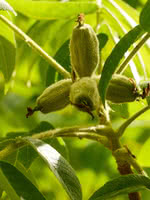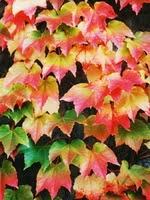Mon-Fri 9am - 5pm Mountain time
Butternut (White Walnut) vs Boston Ivy
Juglans cinerea
Parthenocissus tricuspidata
NOT AVAILABLE THIS SEASON - MIGHT RETURN
Butternut is one of the few walnut varieties native to Canada. The nuts are sought after for their mild, sweet, and oily taste. Ensure this tree is planted in full sun and well-drained soil for best results.
Butternut is self-fertile but it has better yields when planted near other butternuts. It can survive in zone 2, but reliably produces nuts in zone 3.
A top CO2 absorbing species. Experts think this tree may help climate change more than others.
Boston Ivy is an elegant, climbing vine that is often seen as a decorative addition to the sides of buildings. Unlike other climbing vines, this vine does not need a support to grow on. Instead, it clings to surfaces with holdfasts located at the tendril ends.
Boston Ivy is excellent for covering walls, trellises, arbors or fences, but can also be grown on the ground. Don't plant this vine against wood walls, shingle walls, gutters, or shutters as the holdfasts can cause damage over time. This variety will grow as tall and wide as the structure it is grown upon, so make sure you plan your site accordingly.

